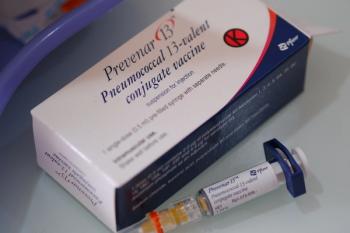
Limitations Persist in Growth of Precision Medicine
Despite breakthroughs for personalized medicine, barriers still exist in real-world application.
In recent years, breakthroughs and advances have led to wider adoption of genomic and precision medicine. Yet, there remains an abundance of unrealized potential in personalized medicine, raising the question: what boundaries still exist in providing more individualized care? This article will discuss current applications of precision medicine and what limitations still persist.
In the past few years, the realities of personalized medicine have become increasingly evident. In 2016, the Precision Medicine Initiative (PMI) launched by the National Institute of Health propelled expansion of precision medicine. Initially announced in 2015, the PMI mission was to enable a new era of medicine through research, technology, and policies to develop more individualized care. In more recent years, breakthroughs and advances in the technology and availability have led to wider adoption of genomic medicine.1 The primary disease states involved in the expansion of precision medicine include oncology, immunology, central nervous system disorders, and respiratory disorders. The growth of precision medicine has also boosted growth of the specialty and rare drug industry. Specialty pharmacies continue to grow and adjust in order to provide a higher level of care for patients with individual disease states.
In 2019, the precision medicine market size exceeded $57 billion and was estimated to grow up to $119 billion by 2026.2 Some of the drivers behind this growth include advances in cancer biology and targeted therapies, increased global adoption of gene therapy, and increased usage of data analytics in precision medicine.3 Alongside the development of targeted therapies themselves, the diagnoses of genetic diseases or genetic targets had growth as well. The availability of these tests has also played a role in the advancement of precision medicine. Some of the main pitfalls include the high cost associated with precision medicine, fear of genetic discrimination, misinterpretation of genetic and health data, access and availability of genetic testing, and a relatively unprepared primary care workforce.
High Cost of Precision Medicine
The high cost associated with precision medicine does not only come from the research and development, but also diagnostic methods and genetic testing. However, the long-term benefits to patients can offset the upfront costs of precision medicine. One way that has been proposed to mitigate cost to a patient would be outcomes-based rebate arrangements, in which the manufacturer would provide a rebate if prespecified therapeutic outcomes are not achieved. Another proposed payment approach would be annuity payments or annual fees, that would be made as long as the therapeutic effect persists. There needs to be a development of health-plan payment systems in which risk adjustment and reinsurance can be utilized for smaller disease states that can be treated by personalized therapies to incentivize insurers to efficiently manage care and control spending.4
Alongside tackling the high cost of therapies, the testing and diagnoses of potential targets are often associated with high costs as well. One way to prove cost-effectiveness would be to ensure that genetic tests are both clinically appropriate and billed correctly. Having genetic counselors to review test-orders could potentially allow health systems and providers to find ways to cut expenses and thus decrease genetic testing costs.5 The ability to invest in genetic expertise and claims may allow health plans to manage the costs associated with genetic innovation more effectively. This may be an area where pharmacists can increase their availability to determine the cost-benefit and effectiveness of targeted drug therapy.
Handling Genetic Information and Data Collection
Genetic information is defined as information about an individual's genetic tests or the genetic tests of an individual's family members, and the indication of a condition in their family members. Under the Genetic Information Nondiscrimination Act (GINA) of 2008, it is illegal to discriminate against employees or health insurance applicants because of genetic information.6 But the battle of GINA continues today as it still excludes other forms of insurance outside of health insurance, including life insurance, long-term care insurance, and disability insurance. Being able to eliminate the risk of genetic discrimination and protect the privacy of an individual’s genetic information still remains an issue in the realm of precision medicine. One major success came in July of 2020 when Florida became the first state to enact a DNA privacy law. Florida’s House Bill 1189: Genetic Information for Insurance Purposes prohibits life, disability, and long-term care insurance companies from using genetic tests for coverage purposes.7 The law blocks companies from requiring or soliciting genetic information from individuals and forbids DNA testing companies from providing genetic information to insurers without their permission. This bill should serve as a model for other states and future legislature to help eliminate the risks of genetic discrimination.
In addition to handling genetic information, access to real-world data and patient outcomes are of equal importance. The momentum of personalized medicine relies heavily on developing genetically targeted therapies based on large populations of data. Forming collaborative networks to share patient data while also maintaining patient privacy is needed to deliver widespread therapeutic advancements. Pharmacies can play a role in sharing patient data and outcomes in order to advance precision medicine.
Preparing Primary Care Workforce
With the advancement and availability of genetic testing and an increased number of medications with genetic considerations comes along with the need to prepare primary care providers and workers for the role of precision medicine in broader populations. To prove that pharmacogenomics and personalized medicine are worthwhile, it would need to be implemented on a wider scale. Creating appropriate teachable moments and training for health networks and providers to implement could create better genomic-based prescribing practices.8 Furthermore, establishing better precision medicine practices would help adapt to the growing market for genetically guided therapy. Precision medicine had historically been considered too complex, expensive, and inaccessible to underserved populations; therefore, it was hard to find a place for it in primary care. Now that precision medicine is becoming increasingly incorporated into evidence-based treatments, it is time to adapt and adjust practice patterns. Pharmacists can advance their knowledge in pharmacogenomics and precision medicine by taking certificate programs provided by the American Society of Health-System Pharmacists or National Association of Chain Drug Stores and applying these concepts and principles to their practice sites.
Takeaways
Precision medicine is here to stay. Although advancements and breakthroughs in the realm of personalized medicine have been bountiful, barriers still exist. The obstacles discussed in this article are only a few areas that pharmacists and other health care professionals can look to in the coming years to expand the practice of precision medicine.
Phil Huber is a PharmD candidate at Duquesne University School of Pharmacy, anticipated to graduate in spring 2021.
Jonathan Ogurchak, PharmD, CSP, is the CEO and cofounder of STACK, a pharmacy information management platform, and serves as preceptor for a virtual Advanced Pharmacy Practice Experiential Rotation for specialty pharmacy, during which this article was composed.
References
- Collins FS, Varmus H. A new initiative on precision medicine. N Engl J Med. 2015;372(9):793-795. doi:10.1056/NEJMp1500523
- Ugalmugle S, Swain R. Precision medicine market size by technology (big data analytics, bioinformatics, gene sequencing, drug discovery, companion diagnostics), by application (oncology, immunology CNS, respiratory), by end-use (pharmaceutical companies, diagnostic companies, healthcare IT companies), industry analysis report, regional outlook, application potential, competitive market share & forecast, 2020-2026. Global Market Insights. February 2020. Accessed December 11, 2020.
https://www.gminsights.com/industry-analysis/precision-medicine-market - Lapteva L, Purohit-Sheth T, Serabian M, Puri RK. Clinical development of gene therapies: The first three decades and counting. Mol Ther Methods Clin Dev. 2020;19:387-397. doi:10.1016/j.omtm.2020.10.004
- Geruso M, Jena AB, Layton TJ. Will personalized medicine mean higher costs for consumers? Harvard Business Review. March 1, 2018. Accessed December 11, 2020.
https://hbr.org/2018/03/will-personalized-medicine-mean-higher-costs-for-consumers - Rizk E. The price of precision medicine: 3 ways for health plans to manage genetic-testing costs. Healthcare Financial Management Association. July 31, 2019. Accessed December 11, 2020.
https://www.hfma.org/topics/payment-reimbursement-and-managed-care/article/the-price-of-precision-medicine--3-ways-for-health-plans-to-mana.html - The Genetic Information Nondiscrimination Act of 2008 (GINA). U.S. Department of Labor. 2009. Accessed December 11, 2020. https://www.dol.gov/sites/dolgov/files/ebsa/about-ebsa/our-activities/resource-center/fact-sheets/gina.pdf
- Sprowls C, Williamson J. HB 1189: Genetic information for insurance purposes. The Florida Senate. July 1, 2020. Accessed December 11, 2020. https://www.flsenate.gov/Session/Bill/2020/1189
- Vitone E. Precision medicine for the masses: Mylynda Massart brings genomics to primary care. PittMed. Summer 2019. Accessed December 11, 2020.
https://www.pittmed.health.pitt.edu/story/precision-medicine-masses
Newsletter
Pharmacy practice is always changing. Stay ahead of the curve with the Drug Topics newsletter and get the latest drug information, industry trends, and patient care tips.















































































































